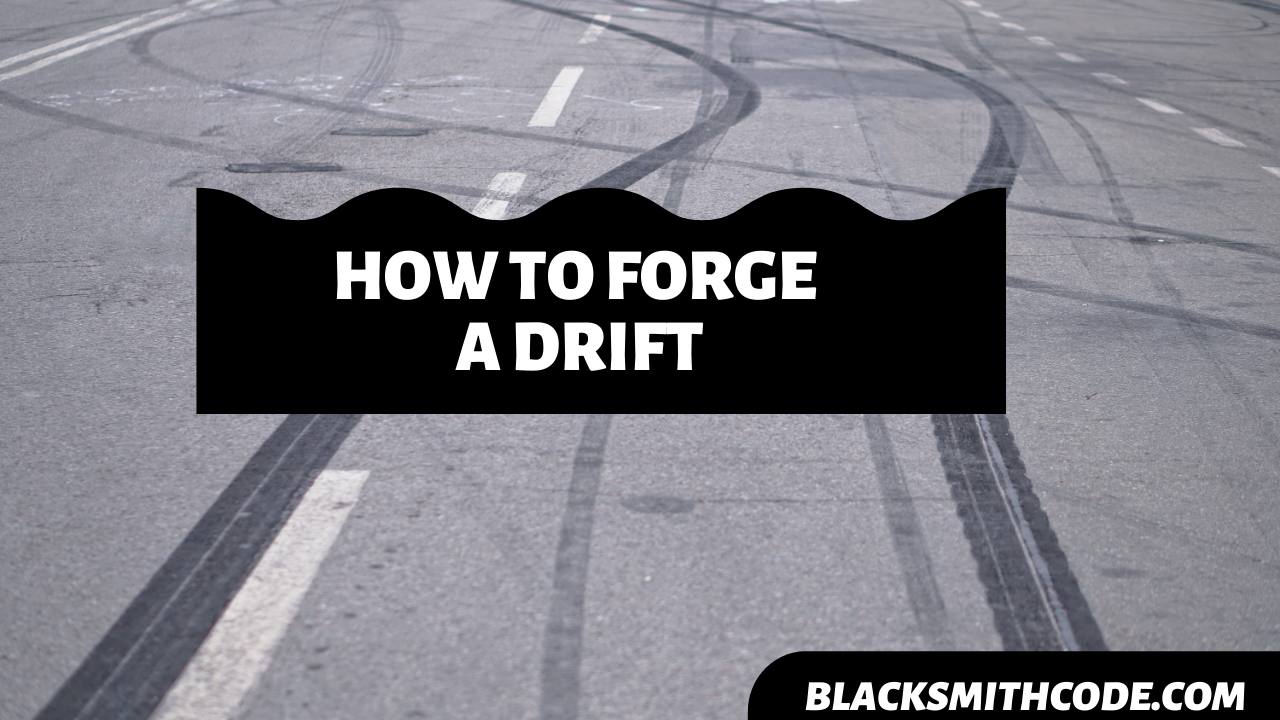Do you know making holes through a metal is a core step in several blacksmithing projects? In a simple language, forging a drift is simply making hole through metal or steel.
If you are forging principal tools such as hammers and axes, you would certainly need to make a drift. In some other projects, you might only need a small drift just sizable enough for fixing a bolt. Therefore, learning how to forge a drift is highly essential for your professional progress as a blacksmith.
However, forging a drift hole is quite easy. All you need is to get the right tools, learn the right technique, and you are good to go. You should also prepare that you might find yourself making drifts on diverse types of material with variable thickness.
The good news is that regardless of the width of the steel, you would use the same techniques for making drifts. However, the variation might come from the rigor of hammering. Similarly, the size and dimension of drifts varies with purpose.
The information below will serve as a valuable guide for forging a drift.
Instructions on How to Forge a Drift
Step 1: Get Your Materials
First off, it is essential to note that the materials you would be making drift on vary depending on the project you are handling. However, for this guide, we would be using a billet of sizable width.
Consider this a practice process.
Step 2: Measurement and Cutting
Measurement is essential for knowing the exact point to make the drift.
Quick Steps
- Use suitable measuring instrument to identify the point where you intend to make the drift.
- Make a mark on the point using a marker.
- Make the mark deeper with a chisel. Making a deeper mark will help you to recognize the point to make the drift even after heating it.
- Make the mark on both sides of the billet before taking it to the forge.
Step 3: Heating
As much as there is no special technique for this process, it is still one of the most essential processes of learning how to forge a drift. It will go a long way to determine the ease of making the drift.
Quick Steps
- Prepare your forge and fire it up to desirable temperature.
- Gently place the billet in the forge and let it heat up to the suitable working temperature.
- Experienced blacksmiths know how to precisely tell the temperature with the color change, you should learn that too.
- Let the steel heat up to 800℃ or orange color.
- Retrieve the billet from the forge once it reaches suitable temperature.
Step 4: Making The Drift
Once you retrieve the billet from the forge, then you can place the billet on the perforated metal plate. Alternatively, some blacksmiths usually have holes of various diameters on one side of their anvil for this purpose.
Regardless of the one you are using; they perform the same function. The aim of the hole is to allow the drift punch go through the drift you want to make rather than experiencing hindrance from a flat leveled surface.
Quick Steps
- Locate the mark you made before taking the billet to the forge.
- Place that side on the perforation of your desirable diameter.
- You can make use of the chisel to make the initial cut half way through the width of the material. Alternatively, you can make use of a drift punch from the start of the process.
- Hammer down the drift punch/chisel mid-way into the width of the material.
- Flip the material over and hammer down the chisel/drift punch until it moves through to the other side.
Step 5: Adjust The Drift
First off, you must keep it in mind that a drift is not rectangular, rather it is oval. Secondly, you would be the one to determine the diameter of the drift. Lastly, the inside of the drift should be completely rounded and there shouldn’t be any sharp edges.
Quick Steps
- Once the drift is through on both sides of the material, then, you can start making adjustments.
- You can change the drift punch to the one that will give you the desired diameter and hammer down.
- If you intend to create a large diameter, you should do it gradually by using punches of different sizes.
- Adjust the drift to ensure that there are no sharp edges. Also, the drift should be oval and not rectangular.
Note: You might have to reheat the billet several times throughout the process.
FAQs on How to Forge a Drift
Question
Can you make a drift while the steel is cold?
It is practically impossible to forge a drift when steel is cold. The only reason why you can easily drive the drift punch through the material is because of its temperature. You would even have a hard time making the drift if your steel is not heated up to the right temperature.
Question
Is making a drift the same as drilling?
Drilling and making a drift are two completely different processes. They employ the use of different techniques and they serve different purposes. Drilling is mostly useful in making tiny holes through thin materials.
Drilling makes use of mechanical processes while making a drift is manual.
Question
How long does it take to make a drift?
Making a drift does not take much time. You should complete the forging of a drift in about 30 minutes or less. It sometimes depends on the width of the material, temperature, and the drifting tool that you are using.
Question
How do I measure the diameter of a drift?
The diameter of a drift is usually the same as that of a drift punch. The diameter of most drift punches is customized; therefore, you can use it to estimate the diameter of the drift. Alternatively, you can use measuring tape to measure the diameter.
Video on How to Forge a Drift
Precautions and Warning
- Be cautious of the diameter while making drifts.
- Handle hot steel with tongs to avoid burns.
- Use only suitable drifting tools for the process.




